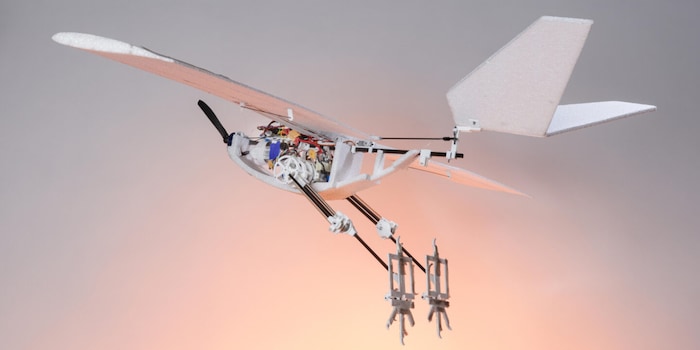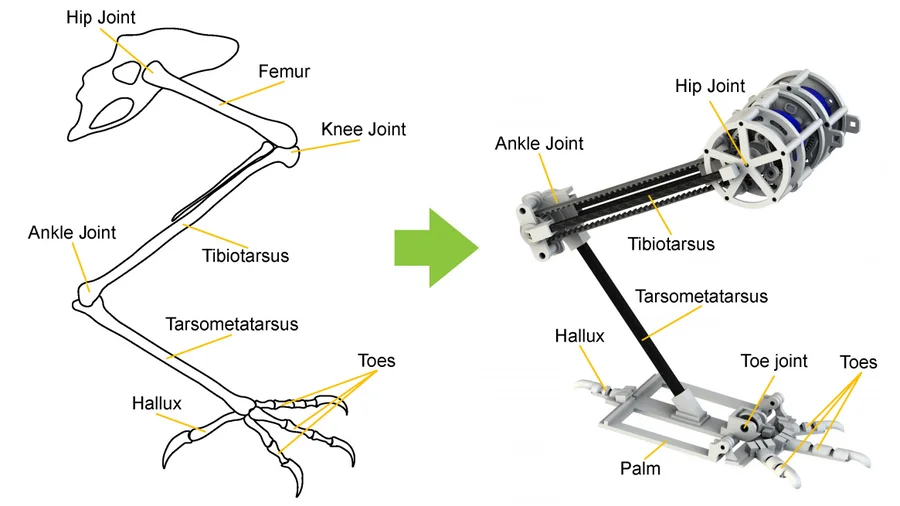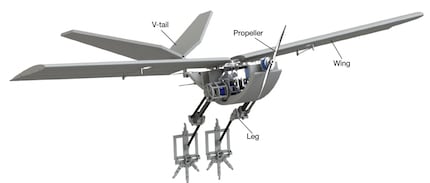
Swiss engineers build flying robots with legs
Swiss researchers have developed a new robot modelled on birds that combines flying and walking movements. The "Raven" could enable new applications in difficult and inaccessible areas.
Running, hopping and flying: This is completely normal for most birds. For robots, the combination of different types of locomotion is challenging. Researchers at the École Polytechnique Fédérale de Lausanne (EPFL) and the University of California have now developed a drone called "Raven" (Robotic Avian-inspired Vehicle for multiple Environments) modelled on birds. This combines the efficiency of flying drones with the manoeuvrability of land robots and unites the two types of locomotion. The research team presented their project in the scientific journal Nature.
Technical features and capabilities
The "Raven" drone is equipped with bird-like legs that enable it not only to fly, but also to walk, jump over obstacles and take off from a standing position. These legs are inspired by the anatomy and movements of birds, especially crows, and offer remarkable energy efficiency. The drone can leap over obstacles from a standing position with a length of up to twelve centimetres and a height of up to 26 centimetres. It reaches a height of almost half a metre when jumping off.
"Raven" requires no assistance during take-off. The drone can jump about half a metre into the air. A propeller then takes effect and accelerates the drone. It can thus reach a speed of around 2.2 metres per second.
Another feature of the "Raven" drone is its ability to switch seamlessly between ground and air movements. This makes it particularly useful in complex environments where conventional drones reach their limits. The drone weighs 620 grams and uses passive, spring-like joints and flexible toes to maximise its agility. The leg section alone weighs 230 grams. "Raven" has a wingspan of about one metre and a body about 50 centimetres long.

Source: EPFL
Application areas and potential
Thanks to its capabilities, the robot opens up new possibilities for the use of drones in difficult and inaccessible areas. For example, it could be used in environmental monitoring, search and rescue missions or in agriculture, where it can work efficiently both on the ground and in the air. Another application is parcel delivery.
The development of the "Raven" shows how nature can serve as inspiration for technical innovations. "Animals are proven functional models. They have survived in their habitats by adopting effective strategies," explains Won Dong Shin, a doctoral student at EPFL.

Source: EPFL
For the future, the research team wants to work on making sure that "Raven" can also use its legs to land. Another modification planned is for the robot to have foldable wings so that it can get through narrow spaces. "The flapping wings would be a very interesting topic. This is very important for landing, because birds brake first with their wings, not with their legs. With flapping wings, this will be a truly bird-like robot," says Shin on the topic.
My interests are varied, I just like to enjoy life. Always on the lookout for news about darts, gaming, films and series.
From the latest iPhone to the return of 80s fashion. The editorial team will help you make sense of it all.
Show all